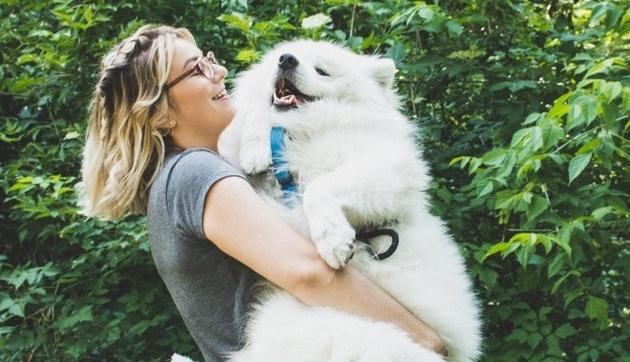Having a strong bond with your pet comes with an array of health benefits, from decreased blood pressure to decreased feelings of loneliness and much more. But let’s face it—pets are expensive. The cost of quality food, toys, litter, and/or waste bags adds up. We all know this. And we love having our pets anyway. However, when you’re renting, the price of being a pet owner is a significant expense beyond just the basics.
As a renter, you can expect to pay a pet deposit, a pet fee, and/or pet rent.
If that sounds like a lot—it can be! It’s important that you know what to expect from pet-friendly apartments beforehand, so you’re 1. not blindsided, and 2. don’t feel that you’re being taken advantage of (no one wants that).
WHAT’S THE DIFFERENCE BETWEEN A PET DEPOSIT, A PET FEE, AND PET RENT?
A pet deposit is a refundable one-time fee that’s usually between $200 and $600. A pet fee is similar to a pet deposit in frequency and amount (one-time payment between $200 and $600) but it’s nonrefundable.
So if your furry friend causes no damage to your rental, you should be able to get your pet deposit back. But even if your pet doesn’t do much more than sleep on your couch, you shouldn’t expect to see your pet fee again.
Pet rent is a discretionary charge that averages between $10 and $50 per month, depending on your landlord’s or property manager’s preference. Pet rent is a newer trend than pet fees and pet deposits. Once an area apartment community starts to implement it, you can be sure that surrounding apartment communities will begin to parrot the local pioneer.
WHAT DOES PET RENT COVER?
Pet rent is often used to cover damage to public areas, such as community landscaping and paved walkways, in addition to paying workers to pick up animal waste and spray for fleas. If an apartment community offers pet amenities like a dog park and/or waste bags, pet rent can be used to maintain them as well.
CAN I NEGOTIATE PET RENT?
Luckily for renters, landlords are (usually) human beings more than capable of compassion. Attempting to negotiate pet rent doesn’t have to be a big, scary monolith of a task. If you want to avoid paying pet rent, you can off-fur to pay a larger pet deposit (so you can get your money back if no damage is incurred and your landlord still has a way to pay for any damages that do occur). You can also offer to sign a longer lease (the less time your unit is vacant, the better for your landlord).
It’s also important to note that service or companion animals are NOT subject to pet rent, pet fees, or pet deposits.
As controversial as pet rent can be (not to mention…ruff), sometimes it can save you money – as opposed to paying a larger pet fee. If you pay a $200 pet fee when you sign a 12-month lease, and pay a $20 pet rent for the duration of your lease, you will end up paying $440 total for the year. Offering to pay a $500 pet fee in lieu of the $20 pet rent would cost you an extra (nonrefundable) $60, in this scenario.
While we all want to believe our pets would never chew up the blinds in our apartment or soil the new carpet, there’s always a chance. Accidents happen. Sometimes we don’t take Fido out in time, and forget to clean Fluffy’s litter box. Fluffy and Fido aren’t immune to illness or bad reactions to new food. Fur babies, unfortunately, aren’t a protected class under the Fair Housing Act (so yes, pet rent is legal). Even so, we love and we pay.






